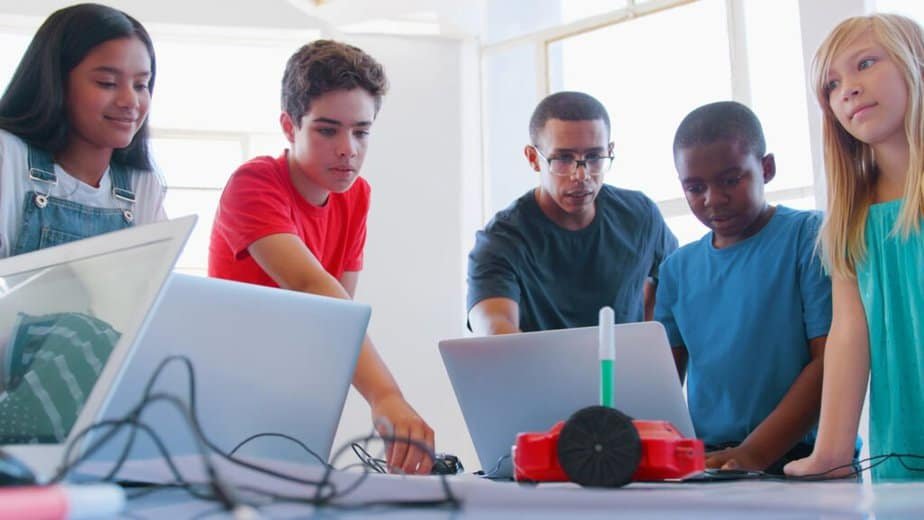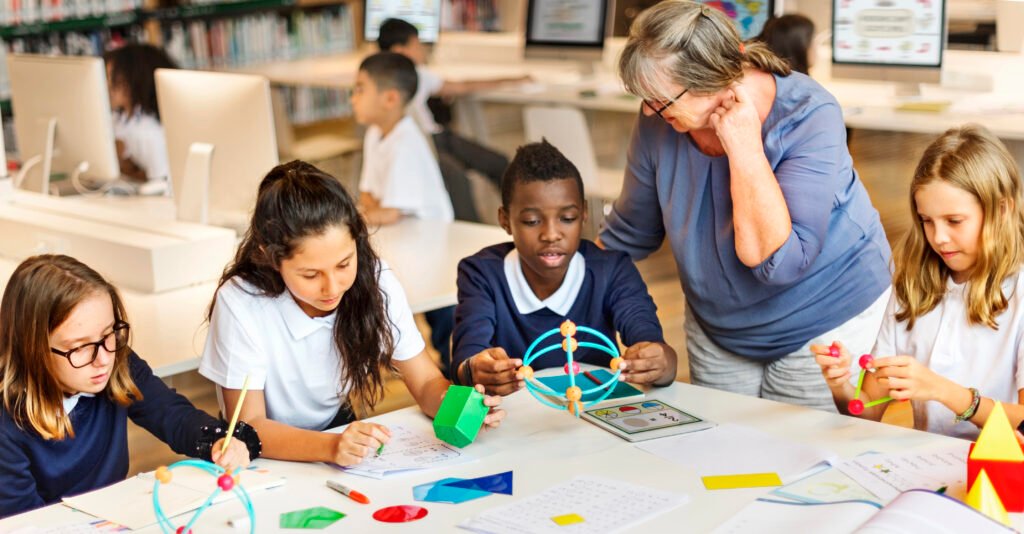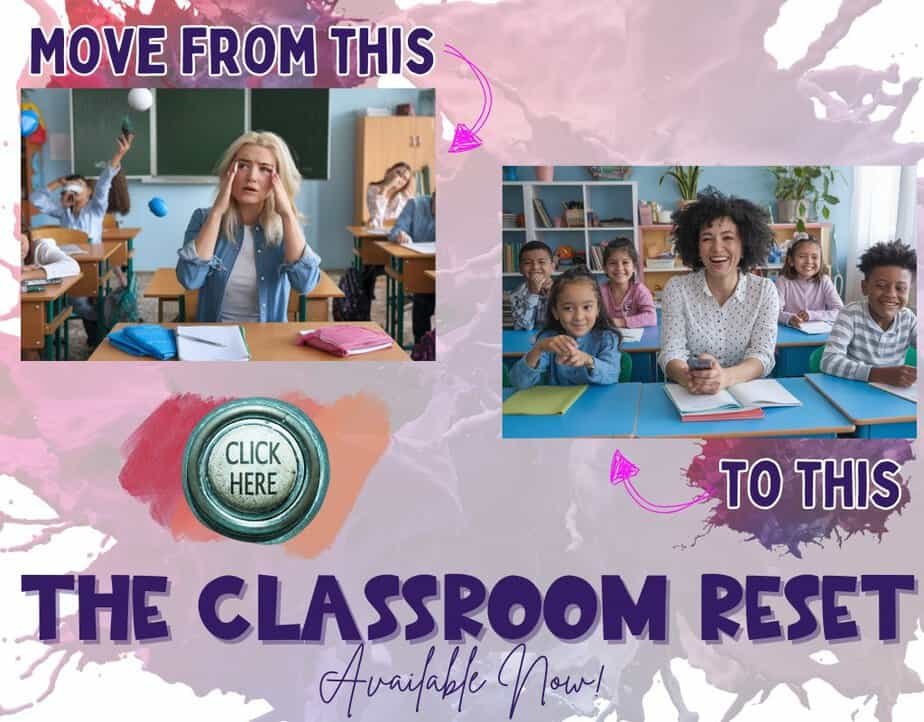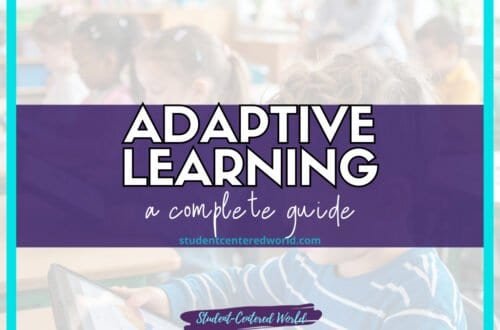What is the theory of Student-Centered Learning and Design?
In recent years, education has undergone significant shifts in how we view the learning process. Traditional teacher-centered learning, where instructors deliver new information through lectures, is increasingly being replaced by student-centered learning, a dynamic teaching method that places the student at the center of the classroom. What is the theory of student-centered learning? This instructional approach emphasizes active learning, where students take an active role in their own learning, fostering critical thinking, problem-solving skills, and a deeper understanding of content.
Student-centered learning is based on core principles that prioritize active student engagement, personalized instruction, and real-world relevance. It is used effectively in both higher education and K–12 settings to enhance learning outcomes and foster critical thinking. Common learner-centered approaches include problem-based learning, project-based learning, inquiry-based learning, and case-based learning.
These methods encourage students to explore complex questions, collaborate with peers, and apply knowledge in meaningful ways. The teacher’s role shifts from delivering content to facilitating learning. Teachers guide students through the learning process as an active participant, providing support and feedback, and creating an environment that encourages independence and deep understanding of student learning.
Rooted in the works of educational theorists like Jean Piaget and John Dewey, student-centered learning practices recognize that learning is an active process shaped by past experiences, cultural contexts, and real-world experiences. Unlike passive absorption of facts, this approach encourages student engagement, collaborative learning, and experiential learning, ensuring that learners construct knowledge in different ways.
Defining Student-Centered Learning
Student-centered learning is an educational experience where students take ownership of their learning goals, actively participating in the design process of their education. Rather than passively receiving information, they engage in active learning through discussions, hands-on projects, and real-world experiences.
According to the Nellie Mae Education Foundation, student-centered learning is defined by several key characteristics that shift the focus from traditional instruction to a more personalized and engaging approach. One of the main features is student ownership of learning, where students take an active role in setting goals, monitoring their progress, and reflecting on outcomes. This encourages greater responsibility and motivation.
Additionally, there is an emphasis on skill development over rote memorization, helping students build critical thinking, communication, and problem-solving skills that are essential in the real world.
Another vital component is the use of formative assessments that guide instruction. Instead of relying solely on high-stakes testing, student-centered learning uses continuous feedback to help teachers adjust their methods and support student growth. This approach allows instruction to evolve based on student progress. Equally important is creating a learning environment that adapts to individual needs. Lessons are personalized to reflect each learner’s strengths, challenges, and interests, often with the help of technology and flexible teaching practices.

Collaborative learning in small groups or through digital platforms is a cornerstone of student-centered education. By working with peers in interactive settings, students deepen their understanding, improve their social-emotional skills, and learn how to contribute meaningfully in group contexts. Whether in person or online, these collaborative experiences support a more dynamic and inclusive educational environment.
This approach contrasts with teacher-centered learning, where the instructor controls class time and content delivery. Instead, student-centered learning practices encourage students to be active participants, exploring new perspectives and applying knowledge in creative ways. Together, these components create a model of learning that empowers students and better prepares them for success beyond the classroom.
Theoretical Foundations of Student-Centered Learning
Student-centered learning is grounded in several influential educational theories that shape its approach and effectiveness in the classroom. These theories emphasize active participation, inclusivity, collaboration, and real-world application, forming the foundation for practices that engage students as partners in their own education.
One of the primary theories supporting student-centered learning is constructivism, as developed by Jean Piaget and John Dewey. Constructivism posits that learners build knowledge through active engagement with new information, integrating it with past experiences. Rather than passively receiving facts, students are seen as active participants who create meaning by exploring, questioning, and applying what they learn. John Dewey emphasized experiential learning, arguing that education should connect to real-world experiences. He believed learning is most effective when it is rooted in the realities of a student’s life and encourages reflection.
Similarly, Jean Piaget highlighted that cognitive development occurs through exploration and problem-solving skills, especially when students are encouraged to interact with their environment in meaningful ways. Together, Dewey and Piaget’s ideas have heavily influenced the shift from teacher-led instruction to environments where students take a central role in constructing their understanding.
Another major influence on student-centered learning is the framework of Universal Design for Learning (UDL). Universal Design principles suggest that instruction should accommodate different ways of learning to ensure that all students have equitable access to education. This theory supports the idea that learners vary widely in how they perceive and comprehend information, as well as how they engage with it.
UDL promotes the use of multiple means of representation, engagement, and expression, enabling teachers to present content in diverse formats, allow for different ways of participating, and provide varied methods for students to demonstrate their knowledge. In doing so, educators create an inclusive learning environment that supports all students, including those with diverse needs, strengths, and preferences.

Theories such as inquiry-based and problem-based learning further support a student-centered approach by encouraging students to take initiative in their education. These learner-centered approaches push students to ask questions, investigate, and solve problems, fostering independence and deeper understanding. Inquiry-based learning emphasizes the importance of critical thinking and curiosity, allowing students to explore topics that interest them through research and discovery.
On the other hand, problem-based learning immerses students in case studies and complex scenarios that mimic real-world challenges, requiring them to apply knowledge from multiple disciplines to find solutions. These strategies promote engagement and help students develop skills that are essential in both academic and professional settings.
Finally, Social Learning Theory plays a crucial role in student-centered education, particularly through collaborative learning. This theory maintains that learning is social, and students greatly benefit from peer interactions. When working in small groups, students engage in discussion, debate, and shared knowledge construction, all of which enhance their comprehension and retention. Collaborative learning creates opportunities for students to explain their thinking, listen to others, and build on different perspectives, making learning a more dynamic and enriching experience.
Together, these theories reinforce the core principles of student-centered learning, where students are active, supported, and empowered to take ownership of their educational journey.
Key Characteristics of Student-Centered Learning
Student-centred learning prioritizes active learning over passive reception, meaning students are involved in processes such as discussing, creating, and applying knowledge rather than simply memorizing facts. For instance, project-based learning often requires students to design a digital image or prototype, reinforcing skill development through meaningful tasks that simulate real-world challenges.
There is a strong emphasis on critical thinking and problem-solving. Instead of just recalling facts, students are encouraged to analyze case studies, debate ideas, and develop essential problem-solving skills. A good example is case-based learning in higher education, which helps students bridge theory and practice, giving them opportunities to apply concepts to realistic scenarios.
Another core component is the importance of personalized learning experiences. Educators recognize that students learn in different ways and adapt instruction accordingly. This is done by using digital learning tools, implementing formative assessments, and allowing for flexible pacing so that each student can engage with the material in a way that suits their needs and strengths.

The role of the teacher as facilitator (not sole authority) is a defining shift in student-centered environments. Teachers no longer act solely as lecturers but instead design engaging learning experiences, offer constructive feedback, and support students as they explore new ideas and take ownership of their learning.
Finally, there is a focus on real-world application. Through experiential learning, students address authentic problems in their school or through digital platforms, building skills and knowledge that prepare them for life beyond the classroom.
Benefits of Student-Centered Learning
Research shows significant benefits and differences in learning outcomes when comparing student-centered and teacher-centered models. Improved student performance is a key outcome of student-centered learning, as active participation leads to deeper understanding. When students are engaged in the learning process, they process information more effectively and make meaningful connections with the material. This naturally leads to enhanced motivation, as students take student ownership of their learning, which increases intrinsic motivation and encourages them to pursue knowledge for its own sake.
In addition, student-centered strategies support better retention, as applying knowledge in creative ways strengthens memory. When learners are asked to use what they’ve learned in new and practical contexts, it reinforces their understanding and helps solidify the information. These approaches also contribute to the development of 21st-century skills, as students engage in activities that nurture critical thinking, collaboration, and adaptability, preparing them for success in both academic and professional environments.
Finally, student-centered learning promotes inclusivity by recognizing and responding to diverse needs. By adapting to cultural contexts and learning styles, educators ensure that all students succeed, regardless of background or preferred method of learning. This inclusive approach helps create a more equitable and effective educational environment.
Practical Strategies for Implementing Student-Centered Learning
Educators can integrate student-centered learning practices through a variety of instructional strategies that promote engagement, autonomy, and real-world relevance. One effective approach is problem-based and project-based learning. In problem-based learning, students tackle real-world problems, such as designing sustainable solutions, encouraging them to think critically and apply what they’ve learned in meaningful ways. Project-based learning involves long-term projects like creating a digital image portfolio, which not only promotes deep learning but also helps foster skill development through sustained effort and creativity.

The flipped classroom model is another powerful strategy. In this model, students review new information at home through videos or readings, allowing them to absorb content at their own pace. Class time is then used for discussions and hands-on activities, maximizing interaction and deeper engagement during in-person sessions.
Collaborative and experiential learning also play essential roles in student-centered instruction. Students work in small groups on case studies or simulations, enhancing their understanding through peer interaction. Meanwhile, experiential learning opportunities such as internships, labs, or fieldwork allow students to gain direct experience in real-world settings, reinforcing classroom concepts and building practical skills.
In inquiry-based learning, students approach topics like scientists, exploring questions, conducting research, and presenting findings. This method promotes curiosity and critical thinking while encouraging independent investigation.
Finally, technology integration enhances student-centered learning by incorporating digital learning tools, such as interactive digital platforms, which support personalized and active learning tailored to individual student needs and learning styles.
Conclusion: The Ultimate Goal of Student-Centered Learning
The ultimate goal of student-centered learning is to empower students to become lifelong learners who think critically, solve problems creatively, and apply knowledge in real-world experiences. By shifting from teacher-centered to learner-centered approaches, educators create a learning environment where students are active participants in their journey.
As brain sciences continue to reveal how learning works, student-centered learning practices will remain the best way to foster effective learning. Whether through inquiry-based learning, problem-based learning, or collaborative learning, placing students at the center of the classroom ensures they develop not just knowledge, but the skills needed for future success.
By embracing these methods, educators can transform their classrooms into dynamic spaces where every student thrives.
Works Cited
Dewey, John. Experience and Education. Simon & Schuster, 1938.
Nellie Mae Education Foundation. Student-Centered Learning: Nine Classrooms in Action. 2015, www.nmefoundation.org.
Piaget, Jean. The Psychology of Intelligence. Routledge, 1950.
Rose, David H., and Anne Meyer. A Practical Reader in Universal Design for Learning. Harvard Education Press, 2006.
Savery, John R., and Thomas M. Duffy. “Problem Based Learning: An Instructional Model and Its Constructivist Framework.” Educational Technology, vol. 35, no. 5, 1995, pp. 31–38.
Thomas, John W. A Review of Research on Project-Based Learning. Autodesk Foundation, 2000.
Vygotsky, Lev S. Mind in Society: The Development of Higher Psychological Processes. Harvard University Press, 1978.







